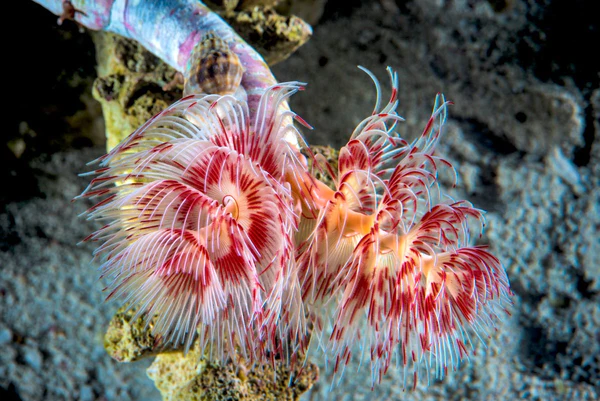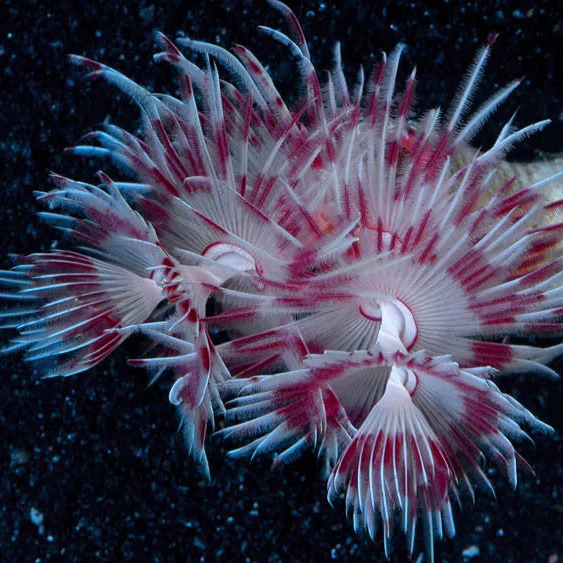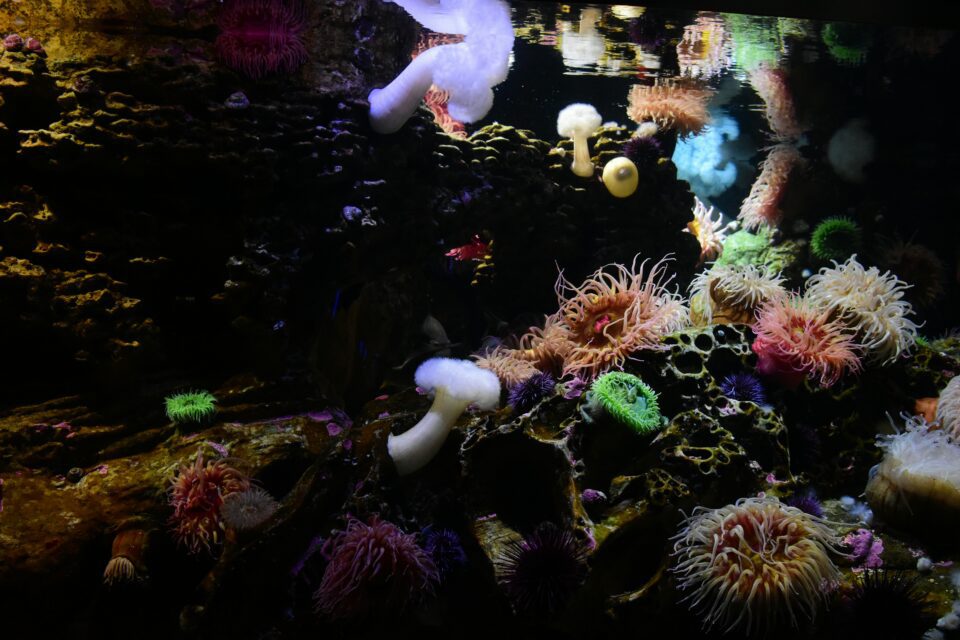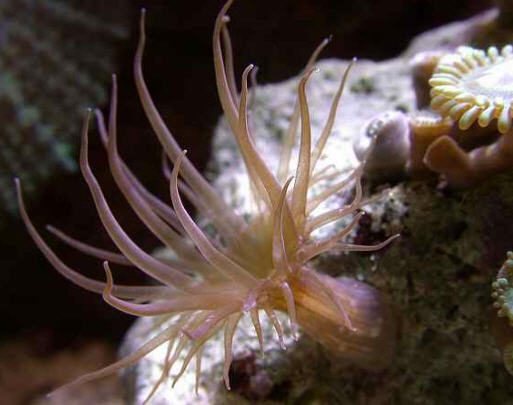Coco Worms (Protula bispiralis) are fascinating marine invertebrates that add a touch of elegance and color to reef aquariums. In this detailed guide, we’ll delve into the captivating world of Coco Worms, including their appearance, habitat preferences, care requirements, feeding habits, potential challenges, and tips for successfully keeping them in a reef tank environment.

Understanding Coco Worms:
- Appearance: Coco Worms are known for their delicate and feathery crowns, which come in a mesmerizing array of colors such as pink, red, orange, and white. These crowns, also known as radioles, are composed of calcareous tubes and soft tissues, creating a stunning visual display reminiscent of underwater flowers.
- Habitat and Distribution: Coco Worms are native to tropical and subtropical waters, commonly found in coral reef habitats with moderate water flow and ample planktonic food sources. They prefer stable reef environments with clean water conditions and minimal fluctuations in temperature and salinity.
- Feeding and Nutrition: Coco Worms are filter feeders, utilizing their feathery radioles to capture plankton and microscopic particles from the water column. They rely on photosynthesis from symbiotic zooxanthellae living within their tissues, supplementing their diet with nutrients derived from sunlight and planktonic prey.
- Tank Compatibility: When considering keeping Coco Worms in a reef tank, ensure compatibility with other tank inhabitants. Avoid housing them with aggressive fish species or predatory invertebrates that may damage their delicate radioles or compete for food resources.
Care Tips for Coco Worms:
- Tank Setup: Provide a well-established reef tank with stable water parameters, including temperature (75-80°F), salinity (1.024-1.026 sg), pH (8.1-8.4), alkalinity (8-10 dKH), and calcium (400-450 ppm). Maintain excellent water quality through proper filtration, regular water changes, and nutrient control.
- Lighting: Coco Worms thrive in moderate to high-intensity lighting, mimicking natural reef conditions. Use LED fixtures with adjustable spectrums to simulate daylight and promote photosynthesis for symbiotic zooxanthellae within their tissues.
- Water Flow: Provide gentle to moderate water flow in the aquarium to ensure adequate nutrient dispersal and oxygenation. Avoid strong currents that may dislodge Coco Worms or inhibit their feeding behavior.
- Feeding Regimen: Supplement Coco Worms’ diet with phytoplankton and zooplankton-based foods to ensure optimal nutrition. Offer small, frequent feedings to mimic natural feeding patterns and promote healthy growth.

Potential Challenges and Considerations:
- Radiole Regeneration: Coco Worms may retract their radioles in response to stress or disturbances. Allow time for regrowth if radioles are damaged, providing a stable and stress-free environment for recovery.
- Compatibility with Predators: Exercise caution when housing Coco Worms with predatory fish or invertebrates that may view them as prey. Select tankmates that are peaceful and reef-safe to minimize predation risk.
- Acclimation Process: When introducing Coco Worms to a new aquarium, acclimate them slowly to prevent shock and ensure a smooth transition. Use drip acclimation methods to gradually adjust water parameters over several hours.
Conclusion:
Coco Worms are captivating additions to reef tanks, offering a glimpse into the intricate beauty of marine invertebrates. By understanding their appearance, habitat preferences, care requirements, and potential challenges, aquarists can create a suitable environment for Coco Worms to thrive and flourish. With proper care, these delicate creatures can contribute to the vibrant biodiversity and aesthetic appeal of a well-maintained reef aquarium, enriching the aquatic experience for enthusiasts and showcasing the wonders of marine life.




